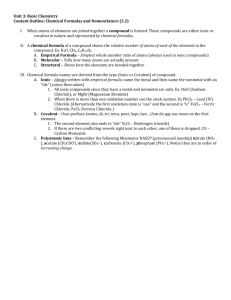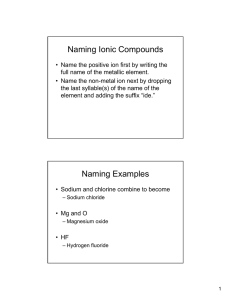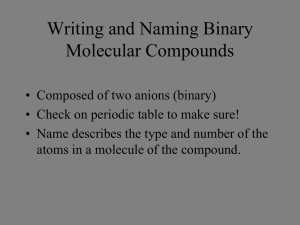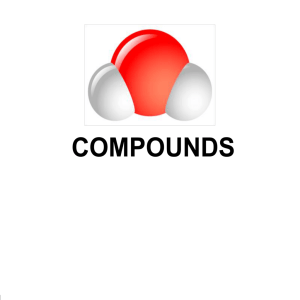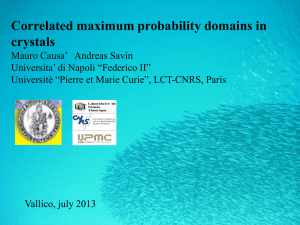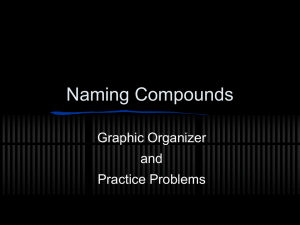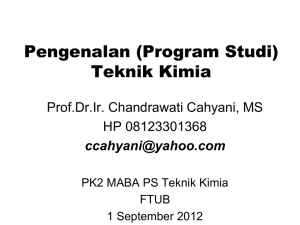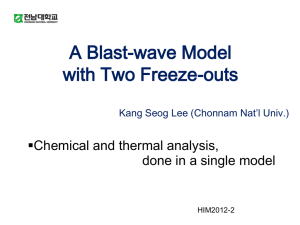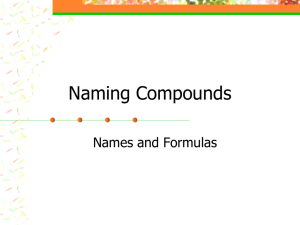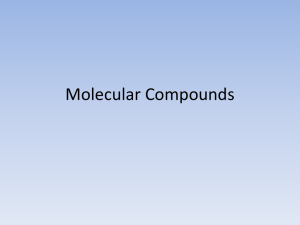Chemical Reactions Chapter 14 Section 1 Forming New Substances
advertisement
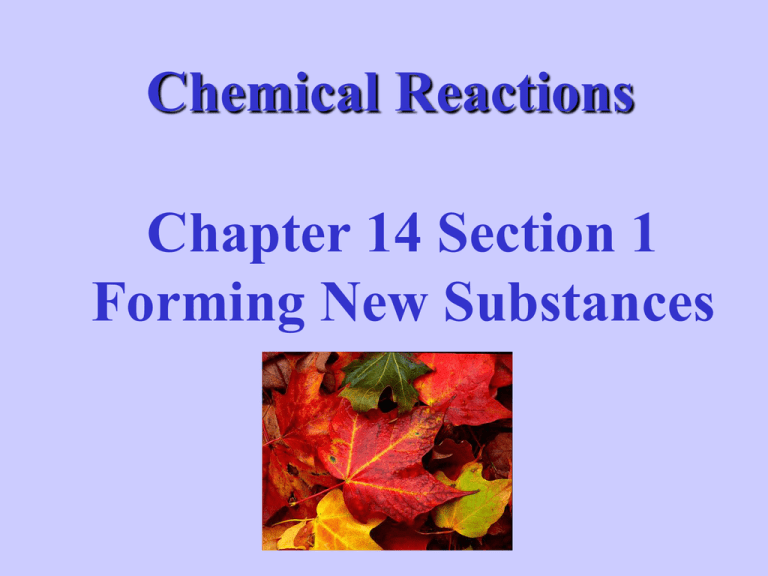
Chemical Reactions Chapter 14 Section 1 Forming New Substances Chemical reaction – process by which one or more substances undergo change to produce one or more different substances. The new substances have different chemical and physical properties from the original substances. An example is when chlorophyll in leaves breaks down into simpler substances. The green that covered the colors is gone and the red, orange, and yellow colors show through. What happens during a chemical reaction? - chemical bonds break - atoms rearrange - new bonds form Some clues to a chemical reaction: Gas formation (bubbling, fizzing) Solid formation (precipitate forms) Color change Energy change Chemical formula – a shorthand notation for a compound or a diatomic element using chemical symbols and numbers. The chemical formula shows how many of each kind of atom is present in a molecule. The chemical formula for water H2O shows that the water molecule has 2 atoms of hydrogen and 1 atom of oxygen. The formula for carbon dioxide CO2 has 1 atom of carbon and 2 atoms of oxygen. The formula for glucose (sugar made by plants during photosynthesis) is C6H12O6. Every molecule of glucose has 6 atoms of carbon _____ 12 atoms of hydrogen _____ 6 atoms of oxygen _____ Prefixes Used in Chemical Names mono di tri tetra 1 2 3 4 penta 5 hexa 6 hepta 7 octa 8 nona 9 deca 10 The formulas of covalent compounds (between nonmetals) are written using prefixes. carbon dioxide – CO2 carbon monoxide – CO carbon tetrahydride – CH4 Formulas for ionic compounds (between a metal & nonmetal) must be written to make sure the overall charge is zero or neutral. NaCl sodium has a 1+ charge & chlorine has a 1- charge The overall charge is (1+) + (1-) = 0 MgCl2 magnesium has 2+ & chlorine has 1- charge 2 chlorine atoms are needed for 1 magnesium atom The overall charge is (2+) + (1-) + (1-) = 0 Write the formula for sodium nitride. 1+ charge. Sodium has a ____ 3- charge. Nitrogen has a ____ The formula is Na__N __. 3 Write the formula for potassium oxide. 1+ charge Potassium has a ____ 2- charge Oxygen has a ____ The formula is K__O __. 2 Ionic or Covalent? (check the elements) Write the formula. 1. sulfur trioxide _________ covalent SO3 ______ 2. calcium fluoride ionic _________ CaF2 ______ 3. phosphorus pentachloride covalent _______ PCl5 ______ covalent _________ ionic _________ N 2O 3 ______ 4. dinitrogen trioxide 5. lithium oxide Li2O ______
